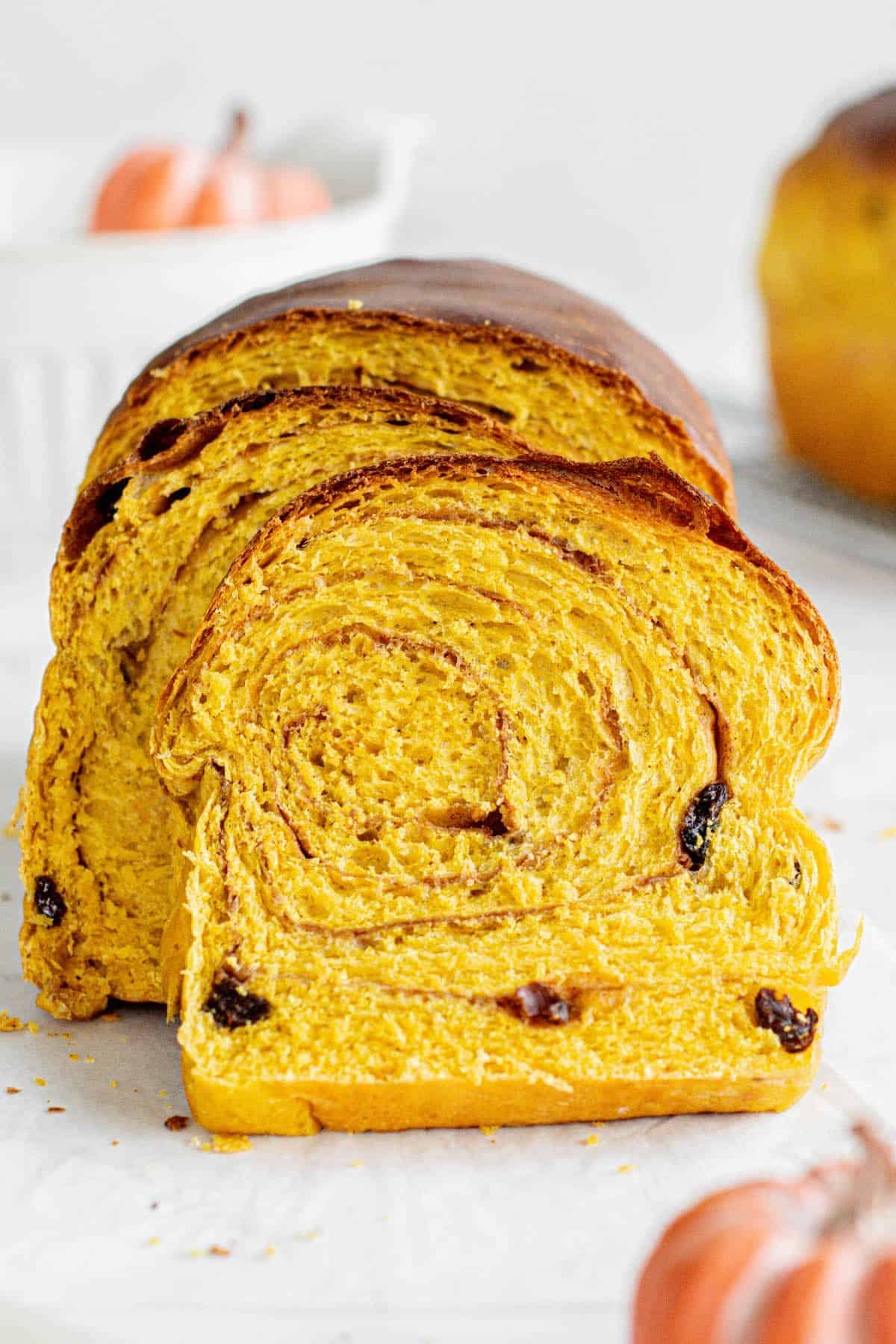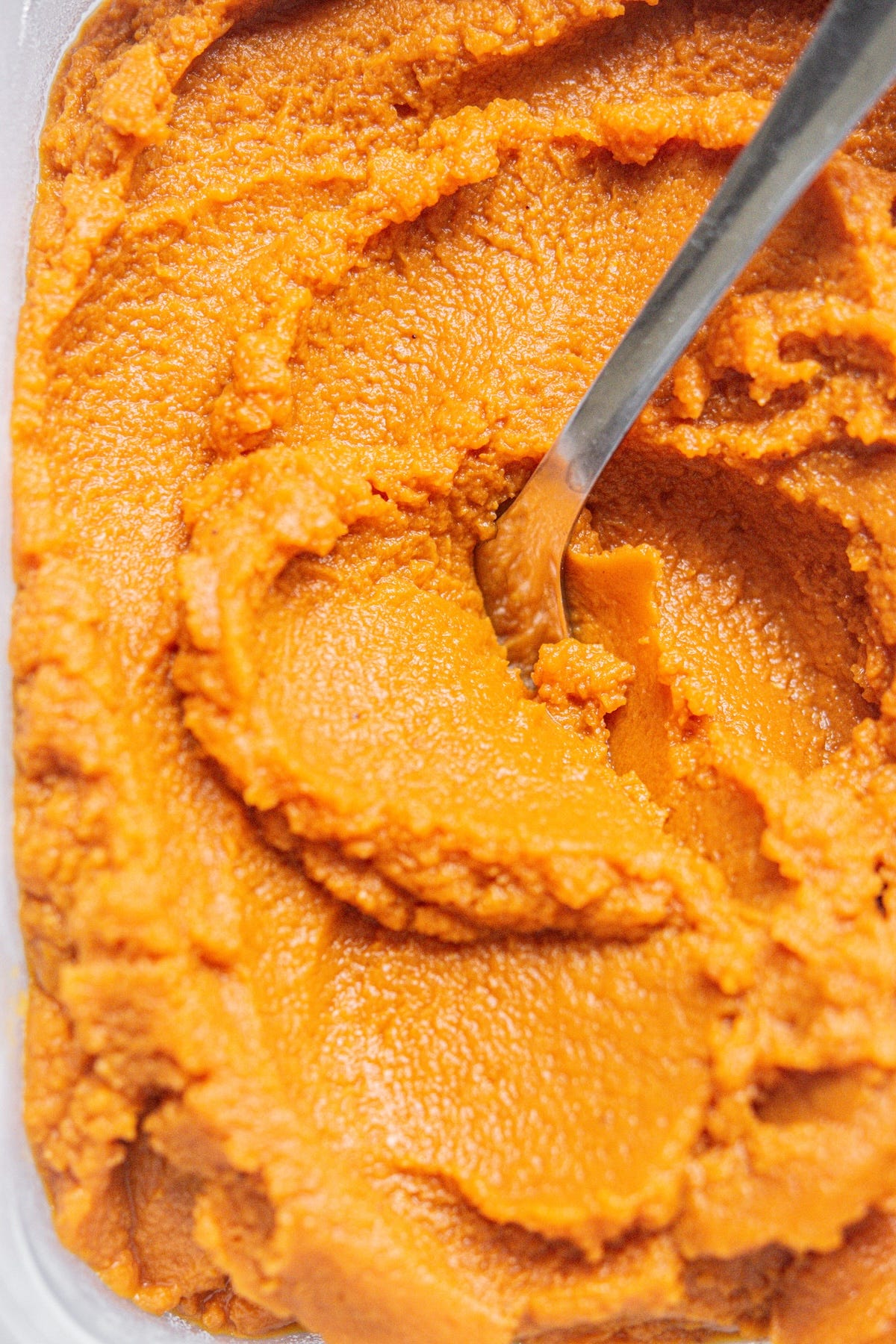This pumpkin yeast bread is a sweet bread filled with pumpkin puree, raisins, and warming spices. It’s delicious fresh or toasted and makes the best french toast!
The gorgeous yellow colour in this bread comes from pumpkin puree. It’s a dough with a high hydration so it’s best made in a stand mixer with a dough hook.
You can buy canned pumpkin puree, or make your own. To make your own, roast pumpkin pieces until they’re really really soft. Once cooled, remove the peels with a knife or use a spoon to scoop the pumpkin flesh away from the peel of the pumpkin and scrape away the stringy bits.
Then puree in a blender until smooth.
You don’t want puree that’s too thin or watery, or it’ll add too much liquid into the dough. Drain it in a cheesecloth for a few hours, or cook it down a bit in a saucepan to remove the excess water and make the puree a bit thicker.
Pumpkin Swirl Bread
Ingredients
240g (1 cup) whole milk, plus more for brushing
2 1/2 teaspoons instant yeast or active dry yeast
65g (1/3 cup) granulated sugar
690g (5 1/2 cups) all-purpose flour* or bread flour, plus more as needed.
225g (1 cup) pumpkin puree
2 large eggs
2 teaspoons ground cinnamon
1 teaspoon ground ginger
½ teaspoon ground nutmeg
1/4 teaspoon ground cloves
1 1/4 teaspoon salt
85g (6 Tablespoons) unsalted butter at room temperature.
150g (1 cup) raisins
Cinnamon-sugar filling
65g (1/3 cup) granulated sugar
1/2 tablespoon ground cinnamon
1/2 tablespoon all-purpose flour
* If using an all-purpose flour, use one with a protein level of at least 11% ( in New Zealand, this is high-grade flour.)
Method
Warm the milk to around 95-104°F / 35-40°C and pour the warm milk into a bowl of your stand mixer. Sprinkle yeast and half the sugar over the milk.
If using active dry yeast, let this sit for around 5-10 minutes until it becomes foamy; if using instant yeast, this step can be skipped.
Add flour, remaining sugar, pumpkin puree, eggs, spices and salt
Fit the stand mixer with a dough hook attachment and mix to form a thick dough. Add in the softened butter, a few cubes at a time.
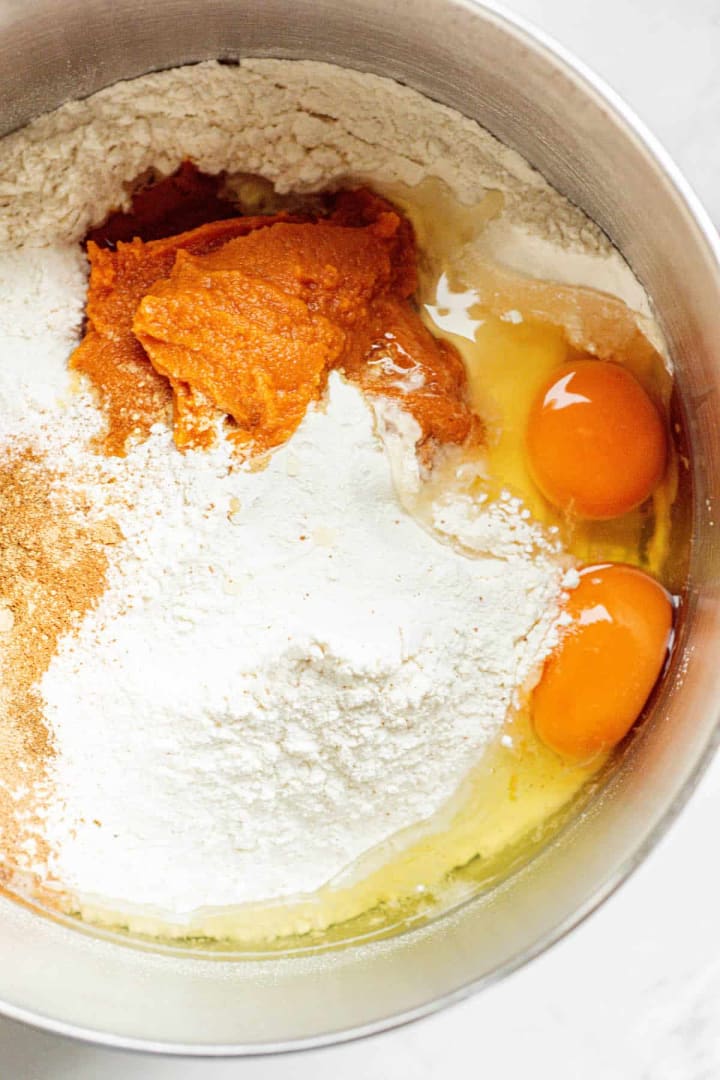
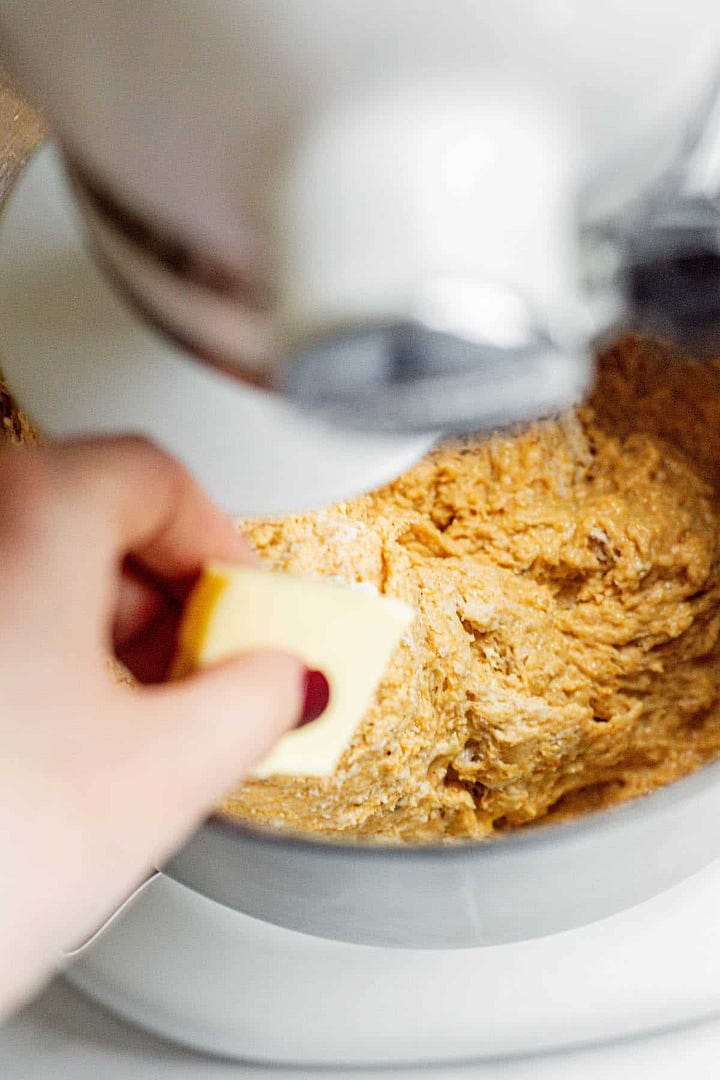
Keep mixing on medium speed for around 15 minutes until the sticky dough is smooth and strong and pulls away from the sides of the bowl. It will still be very tacky but it should be strong. If you find the dough overly sticky your pumpkin puree could have had too much moisture - add in an extra tablespoon of flour or so as needed, but take care not to add too much. It is meant to be a high-hydration dough.
Add in the raisins and mix on low speed until they are incorporated. Once kneaded, use floured hands to form the soft dough into a ball. Transfer the dough to a greased large bowl and cover it.
Let the dough rise in a warm place until doubled in size, around about 1 hour. The exact time the dough rises will depend on your room temperature.
For extra flavour, the dough can undergo a slow cold rise instead. Cover it tightly with plastic wrap and place it in the refrigerator for up to 16 hours.
Shaping
After the first rise, flour the top of the dough lightly and punch it down. Pull it from the bowl onto a floured work surface. If the dough has come from the fridge, it will be stiff.
Mix sugar, cinnamon, and flour in a small bowl for the filling—grease, and line two 8.5×4.5 inch (21 x 11 cm) loaf pans with parchment paper.
Cut the dough into two equal pieces and shape them into balls. On a lightly floured surface, roll out one of the pieces of dough into an 8×15-inch (20x40cm) rectangle.
Sprinkle over half the cinnamon sugar mixture.
Roll the dough up tightly, jelly-roll style into an 8-inch / 20cm log. Pinch the edges to seal them and place the log onto a prepared pan. Repeat with the second piece.


Second rise and baking
Cover the loaf pans loosely and let the bread rise until doubled in size. Meanwhile, preheat the oven to 350°F (180°C).
Once risen, brush the tops of the loaves with milk and bake in the preheated oven for approximately 35 minutes until deep golden brown (with an internal temperature of 195°F.)
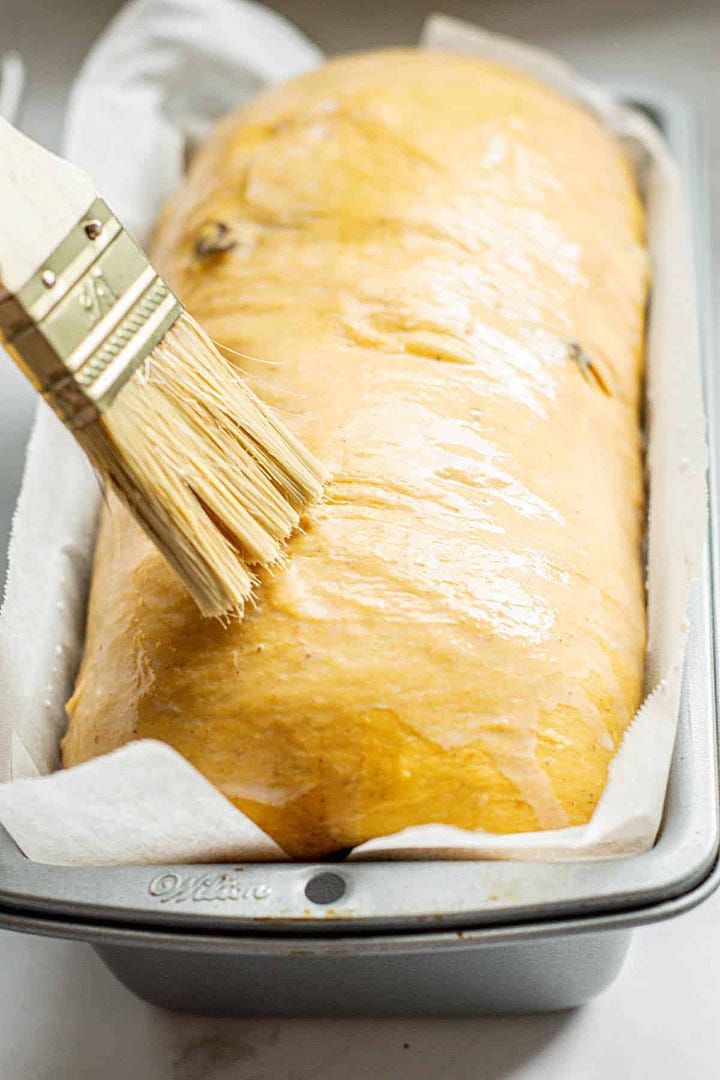
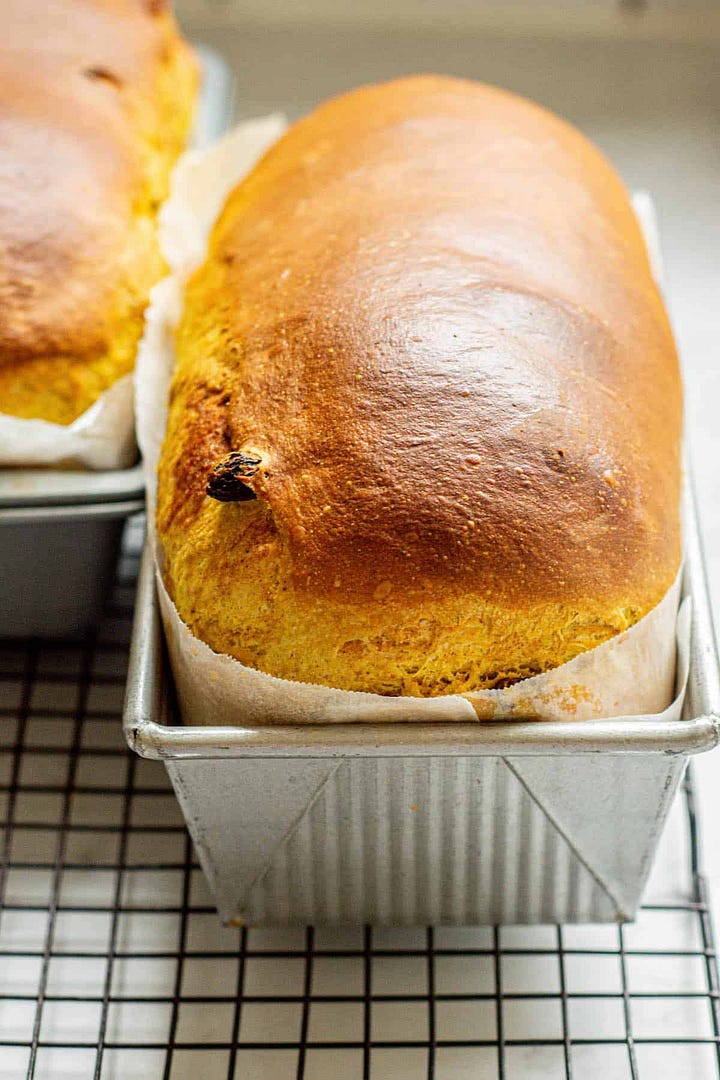
Store the cooled bread in an airtight container at room temperature for up to 3 days. The loaves can be wrapped tightly in a freezer bag for longer storage and frozen for up to 3 months.
I like to slice them before freezing so I can easily take pieces as I need them.
Happy baking!




